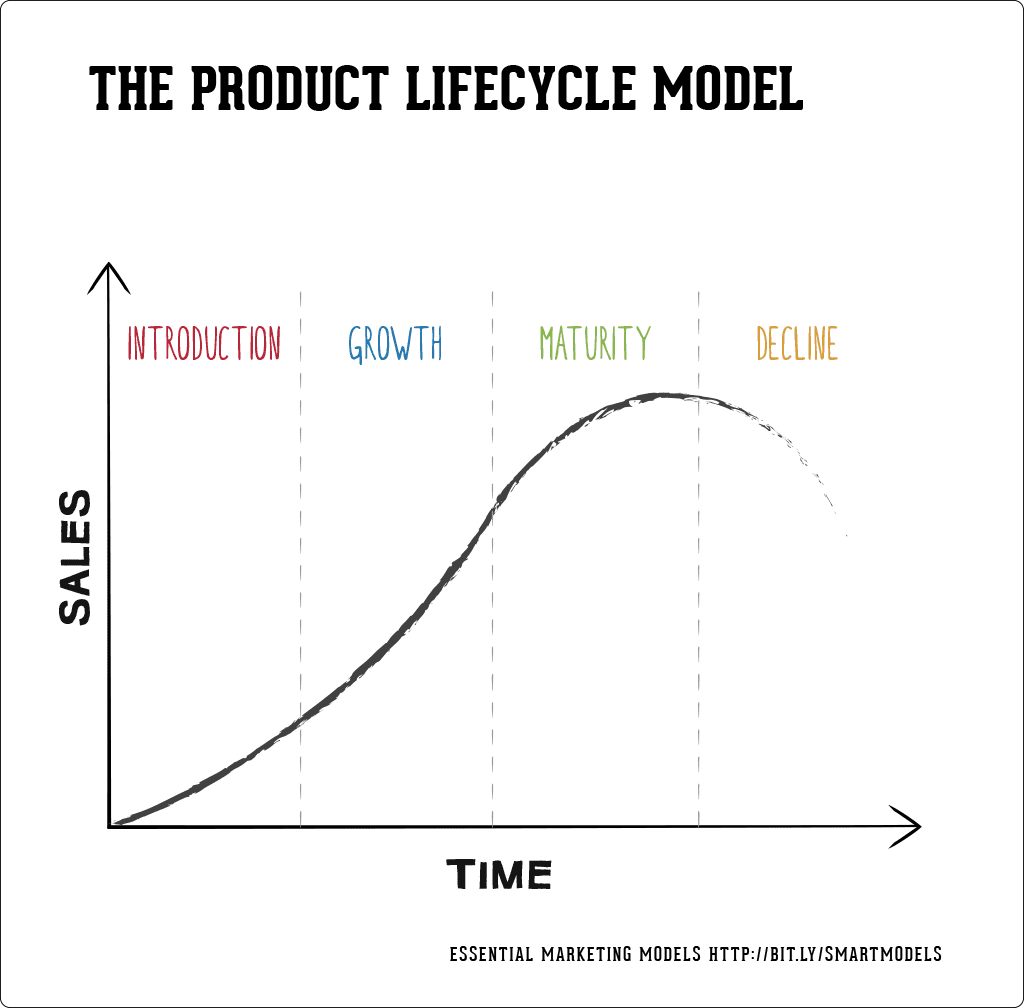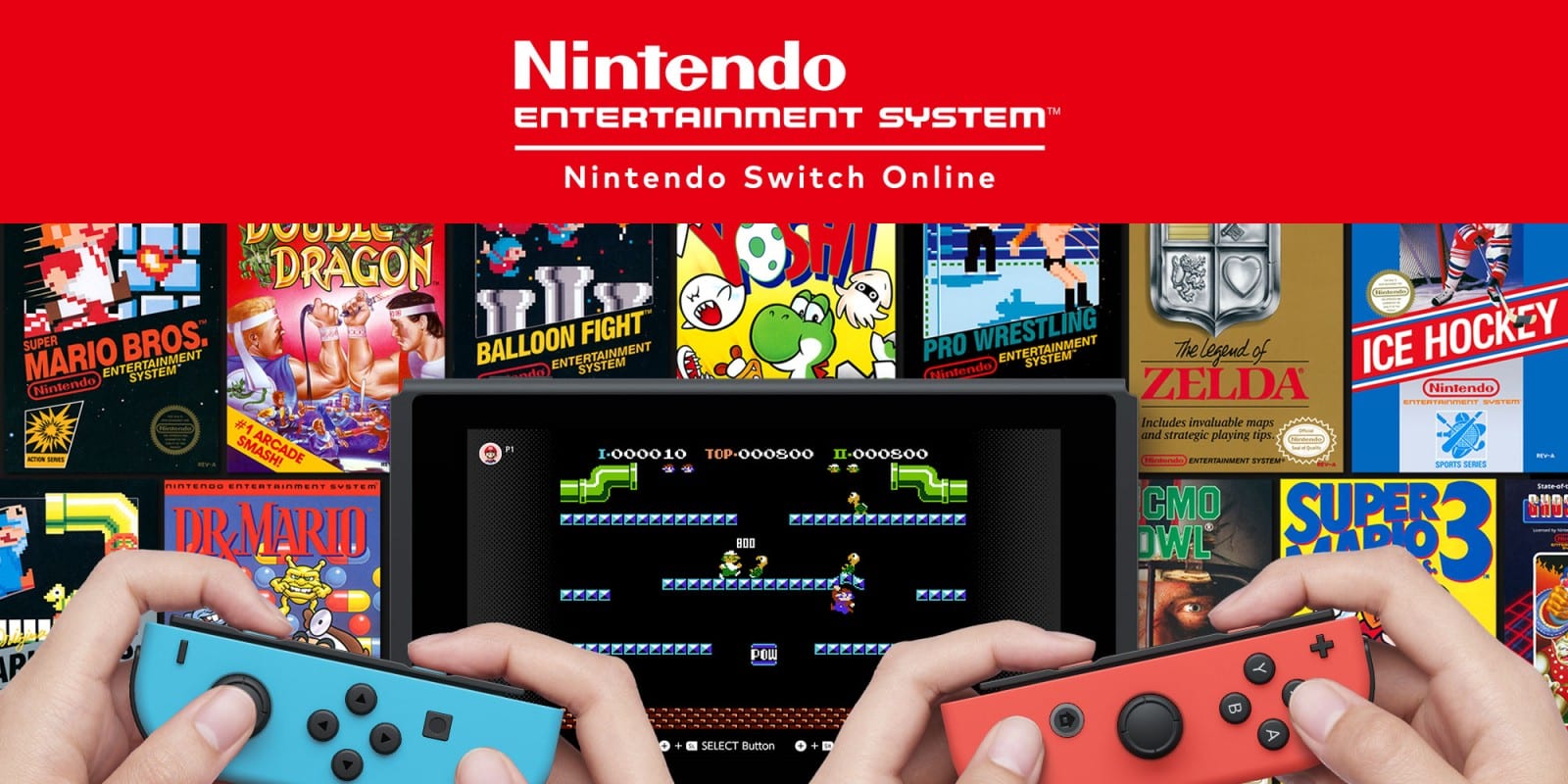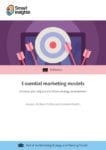Learn how you can use the Product Life-cycle model to project changes in the perception and use of your products
The Product Life-cycle (PLC) describes the stages of a product from launch to being discontinued. It is a strategy tool that helps companies plan for new product development and refine existing products.
What are the stages of the Product Life-cycle?
- Introduction
- Growth
- Maturity
- Decline
The four stages are shown in the table below, although decline can be avoided by reinventing elements of the product. It is also recognized that some products never move beyond the introduction phase whilst others move through the life-cycle much faster than others.

What do the PLC stages mean?
Introduction
Introducing a new product where it’s unknown and products are small. The price is often higher as distribution is limited and promotion is personalized.
Growth
Popularity for the product grown, meaning it is being bought in greater numbers and, with volume, the price declines. Distribution increases and promotion focuses on product benefits.
Maturity
The product competes with alternatives and its pricing drops. Distribution becomes intense (it’s available everywhere) and promotion focuses on the differences to competitors’ products.
Decline
Reaching the end of its life, the product faces fewer competitors. The price may rise and distribution has become selective as some distributors have dropped the product. Promotion aims to remind customers of its existence.
How can I use this model?
When reviewing your business you need to understand which stage your products or services have reached across your portfolio of all products which can be assessed in terms of market share and growth using the BCG matrix model. Reviewing the product of portfolio enables marketers to plan for new products, reinvent existing products or discontinue products that are in serious decline.
You can relate different digital marketing products and services to the hype cycle, which is a form of diffusion of innovation model. This post shows the latest digital technology hype cycles
An example of the Product Life-cycle model
This example shows how the yoghurt product category has moved through the product life-cycle by remixing elements of the marketing mix. Examples of stages and how PLC evolved are:
Introduction
- Yoghurt available in health food stores
- Functional and plain packaging
- Promoted as a health food
Growth
- Yoghurt available in supermarket chiller cabinets
- Packaging gets a makeover
- New flavours introduced (e.g. strawberry and vanilla)
Maturity
- Product re-invented with added fruit/muesli/chocolate
- Packaging changes into different shapes and sizes
- Promoted as a fun snack or luxury treat
Decline
How to extend the Product Life-cycle
There are several strategies you can use to attempt to extend the life-cycle of your product and stave off decline without radically changing your product.
Advertising/packaging
The structure of your advertising and physical appearance of your product should always be considered. Who is it targeting? How do you refer to the product? Tweaking your messages and packaging and aiming them at different demographics can reinvigorate your product or brand. One of the best examples of this is Dollar Shave Club’s video ad that presented its grooming product delivery service in a new, humorous light. To date, the video has over 25 million views and sparked 12,000 orders in the two days following their video being posted.
Price/specification
You can also assess your product features and the price point they’re being offered at. You can then choose to either lower your price for the same product, in an attempt to prolong its appeal by increasing its sense of value, or you can add new features the product to re-energize its place in your industry. A common example of this is the many iterations of laptops you see released by a brand. Large changes are marked by new product names (e.g. Lenovo YOGA laptops) while spec upgrades are labelled ‘generations’. The more generations of a product, the cheaper older generations become as they are seen as ‘value’ options.
A tip is to review customer feedback continuously, to ensure your products don’t reach the end of their shelf life, carry out regular customer surveys. Get feedback and find out what works, what doesn’t and why.
New markets/platforms
To maximize your product’s longevity, you should always explore possibilities of launching your product in new markets or on new platforms. Netflix transformed itself from a DVD delivery service into one of the largest video streaming platforms in the world. Launching its streaming service in the US in 2007, it started to expand into other markets with Canada in 2010, then South American countries such as Brazil, Argentina, and Paraguay. Popularity continued to grow, and Netflix expanded into Europe in 2012.
As technology evolves, so do the platforms you have available for your products. If you find ways for your products to remain flexible in their distribution, you can prolong their life-cycle for years.

Nintendo has been at the forefront of extending the lifespan of their games by continuously utilizing the changing platforms and technology available to them. Several games originally launched in the 1980s and available on cartridges have been re-released multiple times to extend their lifespan:
- Early-2000s: Games released on GameBoy Advance, with the new appeal of portability (akin to portable music devices like Walkman)
- Late-2000s: Games released on the Wii Virtual Console, with the new appeal of forming a non-physical collection on one device (akin to the rise of digital downloads of films)
- 2010s: These games have now been made available on their Switch console as a subscription product (akin to Netflix and other on-demand services)
What else should you consider?
If product sales are declining, you need to know why. Products move into decline due to improved offers from competitors, changes in behaviour or because there is no longer a need for the product. Across Morocco, there are long-established ‘Ecrivains Publics’ or people who read your mail and write the responses. If the literacy levels in the country continue to improve (currently around 70%, from 60% ten years ago) this service will move into rapid decline.
